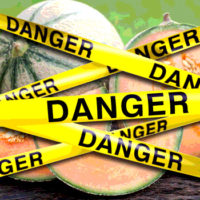Guidelines for Conducting a Simulated Food Recall

In the area of crisis communications, the most important component is a crisis communication plan. In the food and beverage industry, it is singularly the best defense for your company and makes the difference between a poorly and a properly handled crisis. It is always better to be proactive than reactive. The purpose of a food recall simulation is to determine whether your crisis plan works.
Initial Step: Conduct a Vulnerability Audit
Before a simulated food recall is conducted, you should complete a vulnerability audit. Start by creating a list of crises that could occur at or affect your company. A good list can be developed by interviewing senior management officials, other supervisory personnel, employees, distributors and sales reps, key customers, news and trade media that routinely cover your business, trade association officials, suppliers and vendors, retail investors, stock analysts and institutional investors, emergency responders like police, fire, hospital and HAZMAT personnel, information systems experts and Internet consultants.
Make sure to focus on the right issues when conducting your vulnerability audit by analyzing your list according to the following:
• Likelihood of occurrence: Is the scenario very likely, possible but not likely in the near term or not likely to occur at all?
• Potential damage to the company: Does the scenario have the potential for serious damage, manageable damage or easily managed damage? (Note: Damage refers not only to safety issues and physical damage to facilities, but also to the potential for public outrage and harm to the company’s reputation.)
Next, combine these lists and rank them according to the following:
—The scenario is very likely to occur and cause serious damage.
—The scenario is likely to occur and damage is manageable.
—The scenario is possible and could cause serious damage, but is unlikely to occur in the near future.
Other considerations include determining whether the scenario would be a spontaneous crisis or an emergent crisis and whether the company would be the victim or the culprit. Both of these factors will affect how you respond to the crisis and how you frame your messages.
Here are a few questions you need to ask yourself:
• Where in your receiving area can food be compromised?
• Moving into your processing plant, where might contamination enter the process?
• What is the nature of packaging and/or shipping containers?
• How do you track your product’s distribution?
• If you use private labeling, what kind of scrutiny do you have of your suppliers?
• What do FDA inspection reports tell you? CDC reports?
• What types of problems have your product or a competitive product had in the marketplace?
• What is the most serious problem that could realistically occur?
• What do your risk managers, lawyers and insurance company indicate as being major exposures for you?
This simple but critical vulnerability audit—as complete as possible—will become the basis for your simulation.
Establish Your Emergency Response Team and Directors
It is essential to appoint co-emergency directors (EDs) for your Emergency Response Team (ERT). At least two of them. While senior management has the ultimate authority during a crisis, the EDs exercise control over both simulated and real crises. The EDs appoint and interact with your ERT. This team includes senior management, an operations coordinator (the person overseeing the crisis from an operations perspective), a communication coordinator (CC) and an ERT support staff consisting of a legal coordinator, a human resources coordinator, a marketing/distribution coordinator, a transportation coordinator, a financial coordinator, an administrative coordinator, an information systems coordinator, a social media coordinator, a research/media monitor coordinator, your FDA/CDC liaisons (if any) and a logistics coordinator.
The Chain of Command
Next, develop a chain of command for your ERT. Senior management has the ultimate authority over the handling of the crisis and exercises that control through a designated ED. The ED interacts with senior management and all of the coordinators listed above.
 With everyone in place, assign duties to each team member. These responsibilities will vary and can be any combination of those shown in Table 1. Other positions include specialists and technical experts from manufacturing, quality assurance/quality control, engineering, architectural, waste handling, etc.
With everyone in place, assign duties to each team member. These responsibilities will vary and can be any combination of those shown in Table 1. Other positions include specialists and technical experts from manufacturing, quality assurance/quality control, engineering, architectural, waste handling, etc.
In addition to listing ERT positions and roles, describe specific actions and responsibilities for each team member. Each position should also include alternative actions to be taken depending on the how the situation unfolds.
Conducting Simulated/Mock Recalls
Your next step is to put your ERT through several test scenarios based upon your vulnerability audit to measure the effectiveness of your plan. Here’s an example of what should unfold in a simulated food recall:
One of the co-EDs (ED-1) will secretly create the scenarios that will unfold during the simulation. These scenarios will arrive in different print and electronic media forms such as a TV report, a radio report, news articles, a community/consumer blog entry or other form of social media (such as a Twitter tweet), as well as FDA and CDC responses.
The second ED (ED-2) is first notified of an emergency by ED-1. In conjunction with the CC, the ED-2 assesses the situation and determines he/she will activate all or part of the ERT.
Once the ERT is activated, initial steps include immediately securing an affected emergency site, the business premises and telephone(s)—landline or cellular—for ERT member use.
First Two Hours of the Simulation
The next steps include notifying the remaining ERT members, sending the appropriate team members to the ERT meeting site and activating the site’s corporate response center. Based on information from the site, an appropriate statement should be prepared for the media. This statement should be posted on the ERT microsite for ERT member use and reference only. For example, if contamination is suspected, issuing a voluntary food product recall in the form of a news release may be the appropriate response. This release should be reviewed by the entire ERT to ensure that the information is as complete as possible. Then, the release should immediately go out, in simulated fashion, to the entire distribution/sales network with instructions as to where to seek additional information, which products and specific lots numbers are affected and, where applicable, what to do with affected product units. Additionally, pre-warned local emergency response teams and government officials should be contacted. Appropriate government officials should be copied on all press releases, preferably before the media—as simulated activities. This notice should also be immediately provided to the media in a way that ensures the quickest and most effective reach to all communities served by your company, and it should be posted on the company’s Web site (simulated).
During this time, the crisis response and crisis communication teams should be operational at the crisis site and, depending on simulated media interest or presence as provided by ED-1, be prepared for a media briefing.
Additional staff or team members can be assigned the roles of actual distributors who are in receipt of suspected contaminated product and receive notice of the voluntary product recall. These individuals should prepare to submit their concerns or questions to the ERT team.
Proceeding through the Simulation’s Culmination
In the third hour, a media information center should be opened, non-critical notifications made and a liaison established with local emergency operation centers. Keep senior management briefed throughout the process.
Senior management will become involved, and the ED-2 should begin preparing for a shift change. Additionally, if the crisis that you choose to simulate appears to require extended time to contain or resolve, logistics must make appropriate arrangements—lodging for team members, catering, clothing, etc. Once the crisis is under control, the deactivation/recovery phase can be initiated. It will be up to you precisely how long the simulation lasts.
Upon completing the test scenarios and determining flaws in the crisis management plan, adjustments can be made and potential issues resolved.
Final Thoughts
Developing and executing a good crisis management plan is no small task. It takes detailed planning, an exhaustive use of resources and practice. The real key to successful execution, however, is practice. While a variety of organizations in the private and public sectors have crisis management plans in place, the effectiveness of those plans remains unknown due to a lack of simulated/mock recalls. Testing your plan with a variety of scenarios leads to the discovery and resolution of problems that may arise and ensures that your plan will run smoothly if a scenario becomes a reality.
Edward M. Stevens, APR, is president of Stevens Baron Communications, Inc., Cleveland, OH.
Looking for a reprint of this article?
From high-res PDFs to custom plaques, order your copy today!







